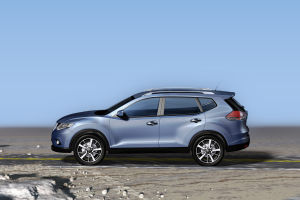Hey there! If you stop and think about it, the way we travel has changed drastically over the last century. From the days of horse-drawn carriages to electric cars silently zipping down streets, it's pretty mind-blowing how far we've come.
The story of automobile technology is not just about machines, but about how we, as humans, have used innovation to solve everyday problems. It all started with the invention of the automobile in the late 19th century.
The first breakthrough came from Karl Benz with the creation of the Benz Patent-Motorwagen in 1885. It was a three-wheeled vehicle powered by an internal combustion engine, and while it might look clunky by today's standards, it was revolutionary for its time. We were finally able to move beyond the reliance on horses!
The Rise of Mass Production
Fast forward to the early 20th century, and we see the era of mass production take off. Henry Ford, an American industrialist, made the car accessible to millions with his introduction of the assembly line in 1913. Ford's Model T was not just affordable; it was a game-changer in terms of how efficiently we could produce cars.
The assembly line allowed for the rapid production of vehicles, making them available to the average person, not just the rich. Suddenly, owning a car was no longer a luxury—it was a reality for many working-class families.
The Evolution of Performance and Safety
By the 1950s and 1960s, the car had become more than just a practical means of transportation—it was a symbol of freedom and status. As automakers competed to build faster, more powerful machines, performance reached new heights. We saw the introduction of muscle cars, with sleek designs and roaring engines.
But with speed and power, came the need for safety innovations. This era witnessed the introduction of seatbelts, airbags, and improved braking systems, all of which were steps towards making our rides safer.
In fact, in the 1960s, the National Highway Traffic Safety Administration (NHTSA) was established, leading to government regulations that pushed for safer vehicles. This shift was crucial for us because safety isn't just a convenience—it's essential for saving lives.
The Push Toward Efficiency: Fuel Economy and Environmental Concerns
In the 1970s, something significant happened—the oil crisis. Suddenly, people started thinking more critically about fuel efficiency. This era marked a shift in how we viewed the energy that powered our cars. The rise of compact cars and the introduction of fuel-efficient engines became a response to the growing concerns over energy use.
Environmental issues became more prominent as the effects of pollution became more visible, and in the 1990s, emissions standards became stricter.
The Electric Vehicle Revolution
Now, let's talk about where we are today. Over the past two decades, electric vehicles (EVs) have become the future. The Tesla Roadster in 2008, followed by the Nissan Leaf and the Chevrolet Volt, has reshaped the conversation. EVs have become a beacon of hope in our battle against climate change.
These cars offer zero-emission driving, significantly reducing our carbon footprint. It's amazing to think that just a few years ago, the idea of an electric car on the roads was considered futuristic—now it's part of our daily reality!
But EVs aren't just about the environment. They're also about technological innovation. EVs come packed with advanced driver-assistance systems (ADAS), making driving safer and more convenient. From automatic emergency braking to lane-keeping assistance, these technologies have paved the way for autonomous vehicles.
The Future of Autonomous Driving
Speaking of autonomous vehicles, let's look ahead. We're entering an era where self-driving cars are no longer a dream. Companies like Waymo and Tesla are pioneering the development of fully autonomous cars. These vehicles are designed to drive themselves using a combination of cameras, sensors, and artificial intelligence (AI).
The potential benefits of autonomous vehicles are enormous—from reducing traffic accidents caused by human error to improving traffic flow and saving time.
However, experts believe we're still a few years away from fully autonomous cars being mainstream. According to Dr. Chris Urmson, CEO of Aurora (a self-driving tech company), we need to ensure that the technology is as safe as possible before it becomes widely available. While there's excitement about what the future holds, the conversation about safety, regulations, and ethics continues to evolve.
What's Next? A New Era of Driving
As we look into the future, there's one thing that's certain: the evolution of automobile technology is far from over. From electric vehicles to autonomous driving, we're only scratching the surface of what's possible. We're heading towards cars that can talk to each other, adjust to traffic conditions, and even predict potential accidents before they happen.
The role of artificial intelligence in driving is set to grow, as will our ability to integrate these technologies into every aspect of our daily lives. But here's the fun part: as this technology evolves, it's going to make our lives easier, safer, and more connected. Imagine a world where we can read, sleep, or even work while our car drives us to our destination!
Wrapping It Up
It's been an incredible ride from the first clunky automobile to the sleek, tech-powered EVs we drive today. We've seen car technology evolve from the basic necessity of transportation to a highly complex, integrated system that will only continue to get smarter. One thing's for sure: the automobile revolution is ongoing, and we are here for the ride.
What do you think the future holds? Will self-driving cars dominate the roads, or will there be new innovations that surprise us even more? Share your thoughts with us—we're always eager to hear your perspective!


